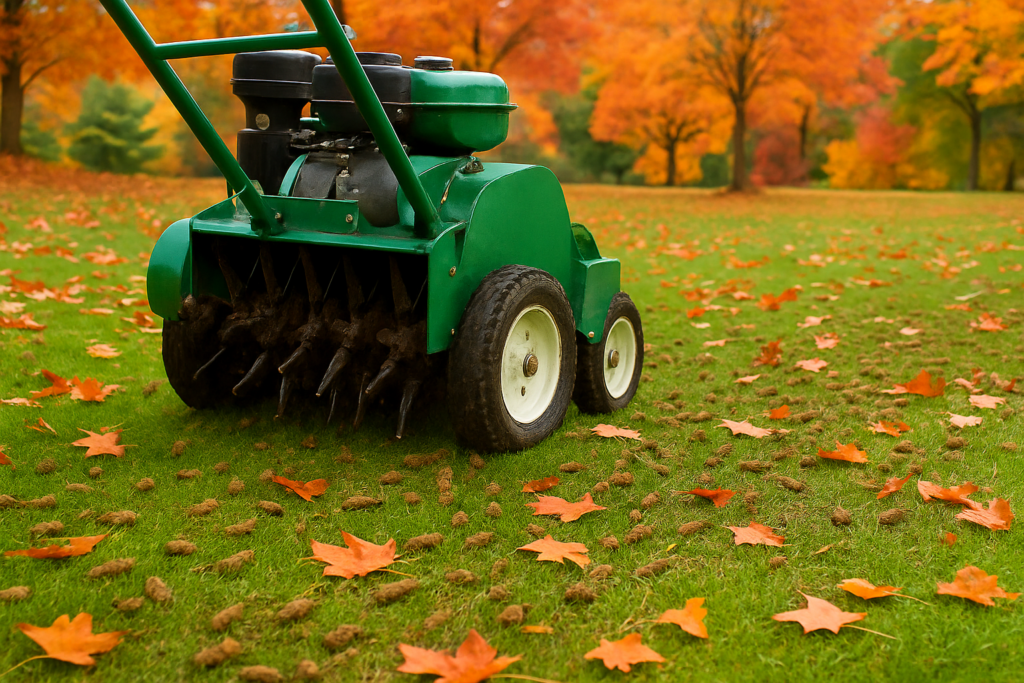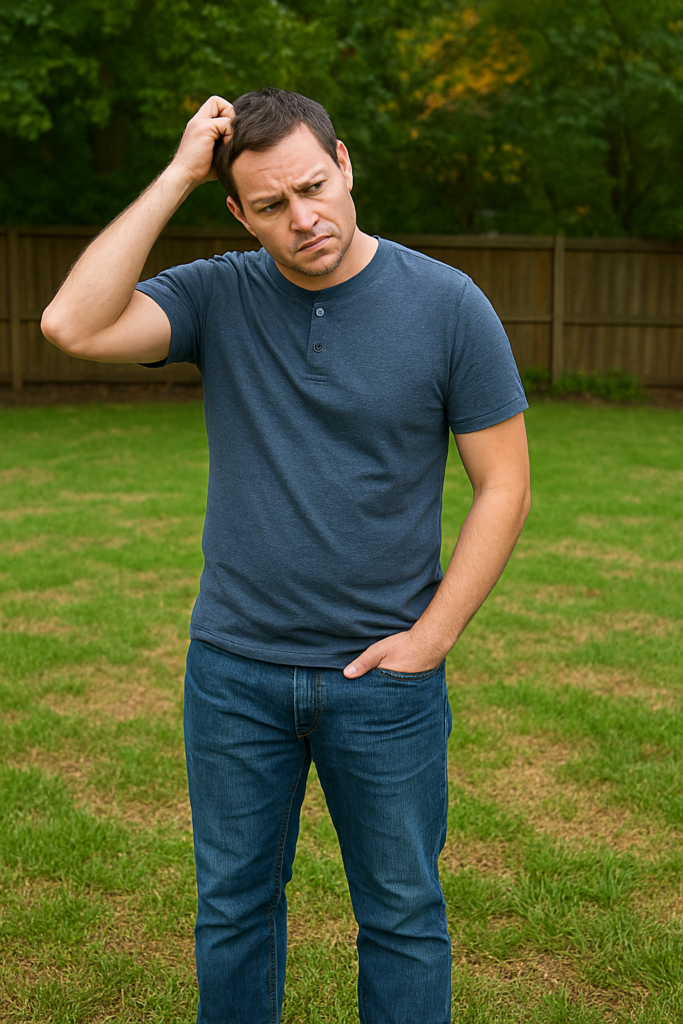If you’ve aerated your lawn, you’ve already taken a big step toward improving soil health and reducing compaction. But the real magic happens when you follow aeration with overseeding and fertilization. Fall is the perfect season for this powerful trio, helping you establish a thicker, greener, healthier lawn.
Why Fall is the Best Time
Cool-season grasses thrive in fall’s conditions:
- Warm Soil, Cool Air: Warm soil supports seed germination while cooler air boosts grass growth.
- Reduced Weed Competition: Many summer weeds are fading, giving new grass a head start.
- Consistent Rainfall: Fall’s moderate rainfall helps new seeds establish without constant watering.
These factors make fall the ideal window for overseeding and fertilization.
Overseeding After Aeration
Aeration creates openings in the soil that make overseeding more effective:
- Seed-to-Soil Contact: Aeration holes allow grass seed to fall directly into the soil, improving germination rates.
- Thicker Turf: Overseeding fills in bare patches, thickens thin areas, and helps crowd out weeds.
- Stronger Resilience: A diverse mix of new grasses improves your lawn’s tolerance to drought, pests, and disease.
Pro Tip: Spread seed evenly and keep soil consistently moist until seedlings are established.

Fertilizing After Aeration
Fertilization is the second half of the equation:
- Nutrient Absorption: Aeration holes allow fertilizer to penetrate deeper into the root zone.
- Stronger Root Growth: Fall fertilization promotes robust root systems that support winter survival and spring recovery.
- Balanced Nutrition: Look for fertilizers formulated for fall with higher potassium content to strengthen roots.
Explore our eco-friendly lawn treatment guide for safe, sustainable fertilizer options.
Step-by-Step: Aeration + Overseeding + Fertilization
- Aerate your lawn to open the soil.
- Spread grass seed evenly across the lawn.
- Apply fertilizer to provide nutrients for new and existing grass.
- Water consistently to keep soil moist until new seedlings are established.
Common Mistakes to Avoid
- Skipping Aeration: Overseeding without aeration reduces seed-to-soil contact.
- Over-Fertilizing: Too much fertilizer can burn grass or pollute waterways.
- Inconsistent Watering: Seeds need consistent moisture to germinate.

Next Steps
Fall is the best time to invest in your lawn’s long-term health. By combining aeration, overseeding, and fertilization, you’re giving your lawn the best chance to thrive through winter and into spring.
Frequently Asked Questions
Why is overseeding more effective after aeration?
Aeration holes create better seed-to-soil contact, which significantly improves germination rates.
What’s the best type of fertilizer to use in fall?
Choose a fertilizer high in potassium to strengthen roots and prepare grass for winter.
Do I need to water after overseeding and fertilizing?
Yes, consistent watering is crucial until new grass is established.
How soon will I see results?
With proper care, new grass begins sprouting in 7–14 days, with visible thickening in 4–6 weeks.
Can I overseed without fertilizing?
You can, but results are much stronger when overseeding is paired with fertilization.



